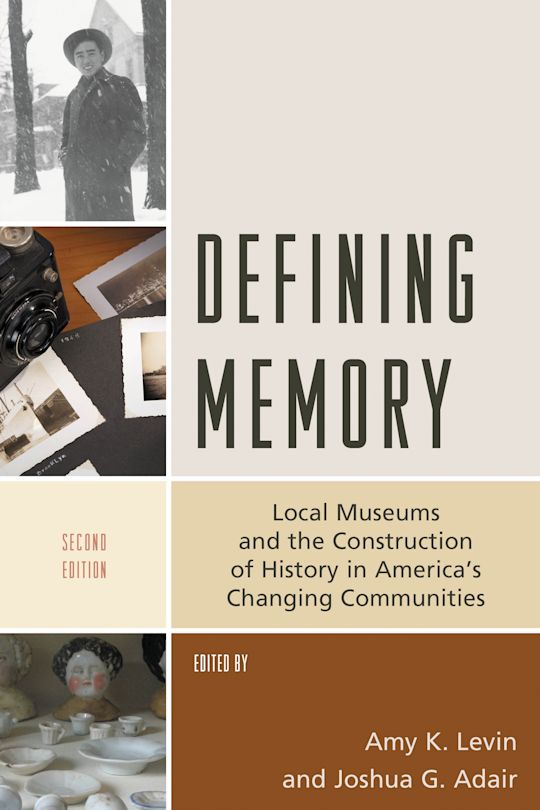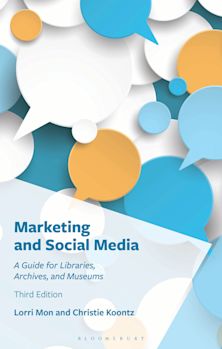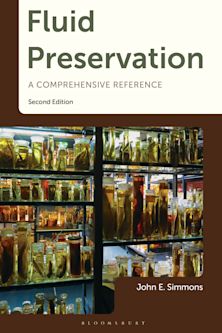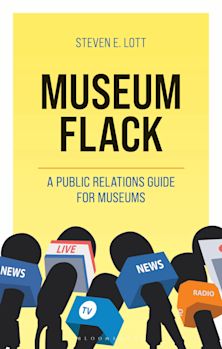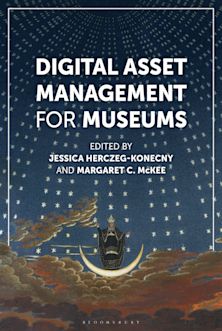Defining Memory
Local Museums and the Construction of History in America's Changing Communities
Defining Memory
Local Museums and the Construction of History in America's Changing Communities
Description
This updated edition of Defining Memory: Local Museums and the Construction of History in America’s Changing Communities offers readers multiple lenses for viewing and discussing local institutions. New chapters are included in a section titled “Museums Moving Forward,” which analyzes the ways in which local museums have come to adopt digital technologies in selecting items for exhibitions as well as the complexities of creating institutions devoted to marginalized histories.
In addition to the new chapters, the second edition updates existing chapters, presenting changes to the museums discussed. It features expanded discussions of how local museums treat (or ignore) racial and ethnic diversity and concludes with a look at how business relationships, political events, and the economy affect what is shown and how it is displayed in local museums.
Table of Contents
Foreword to the second edition, Carol Kammen
I. Frameworks
1. Why Local Museums Matter, Amy K. Levin
2 .Local History, Old Things to Look At, and a Sculptor’s Vision: The Curriculum in Three Local Museums, Elizabeth Vallance
II. The Rebirth of a Nation
3. Public History, Private Memory: Notes from the Ethnography of Colonial Williamsburg,
Virginia, USA, Richard Handler and Eric Gable
4. The House of the Seven Gables: A House Museum’s Adaptation to Changing Societal
Expectations since 1910, Tami Christopher
5. The Louisiana Old State Capitol, Change and Continuity, J. Daniel d’Oney
III. Nostalgia as Epistemology
6. The Small Town We Never Were: Old Cowtown Museum Faces an Urban
Past, Jay M. Price
7. “The Dream Then and Now”: Democratic Nostalgia and the Living Museum at Arthurdale, West Virginia, Stuart Patterson
8. History Lessons: The Selling the John Dillinger Museum, Heather Perry
IV. Museums at Risk: Changing Publics
9. The Politics of Prehistory: Conflict and Resolution at Dickson Mounds Museum, Donna Langford
10. “Such is Our Heritage:” Daughters of Utah Pioneers Museums, Jessie Embry and Mauri L. Nelson
11. “A Repository for Bottled Monsters and Medical Curiosities”:
The Evolution of the Army Medical Museum, Michael Rhode and James Connor
V. Challenging the Major Museum
12. Objects of Dis/order: Articulating Curiosities and Engaging People at the Freakatorium, Lucian Gomoll
13. Cities, Museums, and City Museums, Eric Sandweiss
VI. Museums Moving Forward
14. Crowdsourcing the Art Museum, Leah Mitchell
15. “Womanhood,” Whiteness, and Weddings: On the Complexities of Carnton Plantation, Joshua G. Adair
VII. No Business Like Show Business
16. Business as Usual: Museums, Money, and 9/11 Memories, Amy K. Levin
17. Conclusion: Museums and the American Imagination
Product details
| Published | 20 Oct 2017 |
|---|---|
| Format | Ebook (Epub & Mobi) |
| Edition | 2nd |
| Extent | 346 |
| ISBN | 9781538107898 |
| Imprint | Rowman & Littlefield Publishers |
| Series | American Association for State and Local History |
| Publisher | Bloomsbury Publishing |









